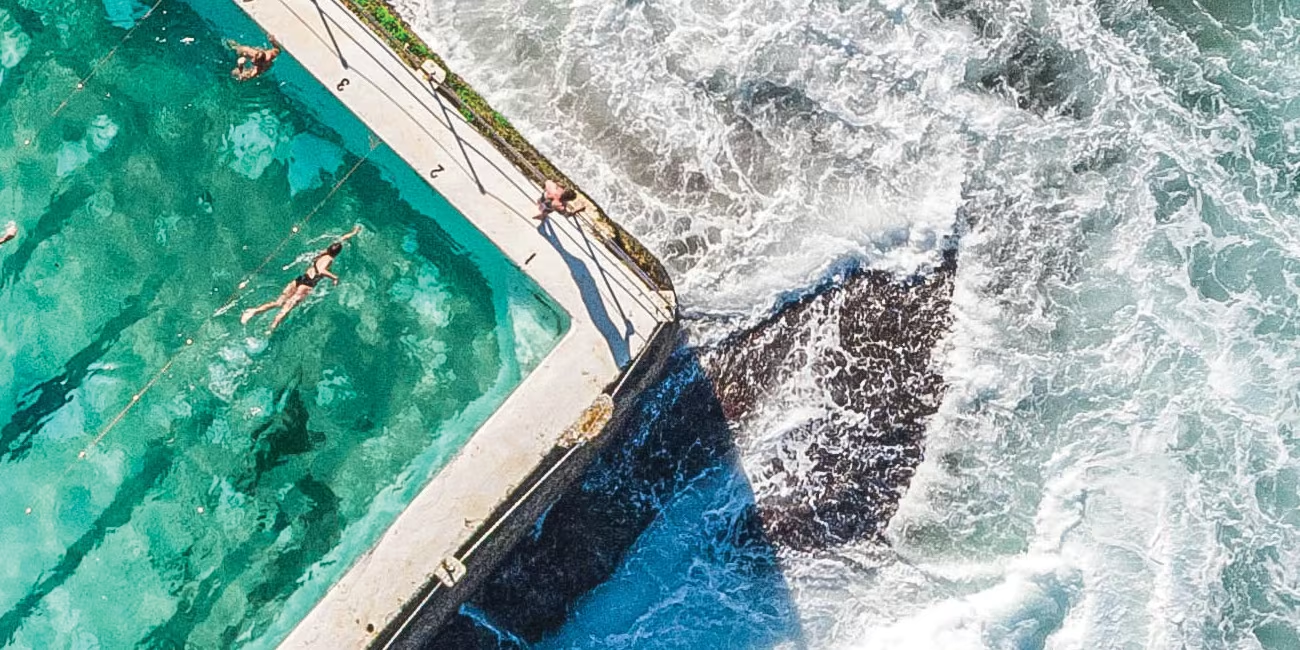Sustainable Web Design: 15 Principles for Eco-Friendly Websites
How to build brilliant websites that don’t cost the earth (literally)
TL;DR: The Quick Guide to Greener Web Design
Short on time? Here’s the gist: The internet produces as much CO2 as the aviation industry, but your website doesn’t have to be part of the problem. Sustainable web design means optimising images, choosing green hosting, writing efficient code, and designing with longevity in mind. It’s not about making boring websites—it’s about making better ones that happen to save the planet. Start with image optimisation and green hosting, then work through our 15 principles below. Your site will be faster, your users happier, and polar bears everywhere will give you a virtual high-five.
The internet might feel weightless, but it’s got a carbon footprint the size of a small country. Every website visit, every scroll, every cat video—they’re all munching through electricity like a teenager raids the fridge. As web designers and developers, we’ve got a responsibility that goes beyond making things look pretty. It’s time to embrace sustainable web design principles that create stunning digital experiences without leaving Mother Earth gasping for air.
Why Sustainable Web Design Matters More Than Ever
Here’s a sobering thought: if the internet were a country, it would rank as the world’s fourth-largest polluter. Digital technologies account for roughly 4% of global greenhouse gas emissions—and that figure is climbing faster than a startup’s valuation in Silicon Valley.
Every website is essentially a small factory churning away in data centres across the globe. When someone visits your site, they’re not just consuming bandwidth; they’re consuming actual electricity. From the server hosting your content to the device displaying it, energy flows through every interaction.
But here’s the brilliant bit: sustainable web design isn’t just about saving polar bears (though they’ll appreciate it). It’s about creating faster, more accessible, and more user-friendly websites. It’s a win-win situation where doing good actually means doing better.
The 15 Principles of Sustainable Web Design
Technical Optimisation: The Foundation Layer
1. Optimise Images Like Your Carbon Footprint Depends On It
Images are the heavyweight champions of web bloat. A single unoptimised photo can weigh more than an entire text-based webpage from the early 2000s. Use next-gen formats like WebP or AVIF, implement lazy loading, and serve responsive images that scale appropriately for different devices.
Pro tip: That hero image doesn’t need to be 4K resolution. Your users’ eyes aren’t that sophisticated, and your server will thank you. Free tools like cloudinary.com will help convert and compress.
2. Choose Your Hosting Wisely
Not all web hosts are created equal. Green hosting providers power their data centres with renewable energy sources like wind, solar, or hydroelectric power. Companies like GreenGeeks, ServerSaurus, and CrazyDomains who we use. Hosting are leading the charge towards carbon-neutral hosting.
Research your hosting provider’s environmental policies. If they’re cagey about their energy sources, that’s usually a red flag flapping in the wind. We’ve compiled a few of our favourites here to help save you some time. Check out green guide to hosting in Australia.
3. Embrace Minimalist Design Philosophy
Minimalism isn’t just a design trend—it’s an environmental statement. Every element on your page requires energy to load, render, and display. Channel your inner Marie Kondo and ask yourself: “Does this spark joy, or does it just spark unnecessary CO2 emissions?”
Clean, uncluttered designs load faster, use less bandwidth, and often convert better. It’s design efficiency at its finest.
4. Implement Smart Caching Strategies
Caching is like having a really organised personal assistant who remembers everything. Browser caching, server-side caching, and CDN caching all reduce the need for repeated data transfers. When content is cached, it’s served from a location closer to the user, reducing both loading times and energy consumption.
Set up proper cache headers and leverage browser caching to keep your site speedy and sustainable.
5. Optimise Your Code Ruthlessly
Bloated code is the enemy of sustainable design. Minify your CSS and JavaScript, remove unused code, and eliminate redundant styling. Every unnecessary character is a tiny energy vampire sucking power from the grid.
Use tools like PurgeCSS to strip out unused styles, and consider whether you really need that massive JavaScript framework for a simple landing page.
Design Philosophy: Making Smart Choices
6. Design for Device Diversity
Not everyone is browsing on the latest MacBook Pro with superfast broadband. Design for older devices and slower connections. This means efficient code, progressive enhancement, and considering the energy consumption of different devices.
Mobile devices often have limited battery life and processing power. Design experiences that respect these constraints.
7. Prioritise Performance Metrics
Fast websites use less energy. Monitor your Core Web Vitals, track your Time to First Byte, and keep an eye on your total page weight. Tools like GTmetrix, PageSpeed Insights, and WebPageTest become your environmental impact assessments.
Aim for page load times under 3 seconds and total page weights under 1MB where possible.
Pro tip: We built a free no fluff SEO checker so you can get quick insights into your site speed… and we love it. Try it for yourself!
8. Use Sustainable Typography
System fonts require zero additional downloads and render instantly. While custom fonts can enhance your brand, use them judiciously. Subset your fonts to include only the characters you need, and consider variable fonts that offer multiple weights in a single file.
Cheeky insight: Comic Sans might be aesthetically questionable, but it’s environmentally sound since it’s already installed everywhere.
9. Implement Intelligent Content Delivery
Content Delivery Networks (CDNs) distribute your content across multiple servers worldwide, reducing the distance data travels. Choose CDNs powered by renewable energy, and implement intelligent routing that directs users to the most efficient server.
This isn’t just about speed—it’s about reducing the energy required for each request.
10. Audit Your Third-Party Dependencies
Every external script, widget, and plugin adds to your site’s environmental impact. Social media widgets, analytics tools, and advertising scripts all consume energy. Audit these regularly and remove anything that doesn’t provide clear value.
Consider privacy-focused analytics tools like Plausible or Fathom that use less bandwidth than Google Analytics.
11. Design for Longevity
Sustainable design isn’t just about immediate efficiency—it’s about creating websites that stand the test of time. Avoid design trends that will look dated in six months and require complete rebuilds. Focus on timeless, accessible design principles that age gracefully.
Think of it as the difference between fast fashion and a quality investment piece.
12. Embrace Progressive Web Apps
PWAs can significantly reduce energy consumption by caching resources locally and reducing server requests. They work offline, load instantly, and feel native to the platform. It’s like having a website that’s been to the gym and can now do more with less.
13. Implement Efficient Database Design
Database queries are energy-intensive operations. Optimise your database structure, use indexing effectively, and implement query caching. Every millisecond saved on database operations translates to energy savings.
Consider using more efficient database engines and review your queries regularly for optimisation opportunities.
Measurement & Advocacy: The Long-Term Vision
14. Monitor and Measure Your Impact
You can’t improve what you don’t measure. Use tools like Website Carbon Calculator or CO2.js to track your website’s environmental impact. Set benchmarks and work towards continuous improvement.
Make sustainability metrics part of your regular reporting, alongside traditional performance metrics.
15. Educate and Advocate
Sustainable web design is a collective effort. Share your knowledge with colleagues, clients, and the broader web community. Advocate for environmental considerations in project planning and help others understand the connection between digital design and environmental impact.
The Business Case for Sustainable Web Design
Let’s talk brass tacks: sustainable web design isn’t just good for the planet—it’s good for business. Faster websites have better conversion rates, improved SEO rankings, and lower bounce rates. Users prefer sites that load quickly and work well on any device.
Environmentally conscious consumers are increasingly making purchasing decisions based on a company’s environmental credentials. A sustainable website can be part of your broader environmental messaging and brand positioning.
Tools for Measuring Sustainability
Website Carbon Calculator: Estimates the carbon footprint of your website EcoPing: Monitors website performance and environmental impact CO2.js: JavaScript library for calculating digital carbon emissions Green Web Foundation: Directory of green hosting providers PageSpeed Insights: Google’s tool for measuring website performance
The Path Forward
Sustainable web design isn’t about making websites boring or limiting creativity. It’s about being more intentional with our design decisions and considering the broader impact of our digital creations. Every optimised image, every removed script, every efficient line of code contributes to a more sustainable internet.
The principles outlined here aren’t just suggestions—they’re becoming necessities as we face increasing environmental challenges. Forward-thinking designers and developers are already implementing these practices, gaining competitive advantages while contributing to a more sustainable digital future.
Conclusion: Small Changes, Big Impact
Creating sustainable website doesn’t require a complete overhaul of your design process. Start with the low-hanging fruit: optimise images, choose green hosting, and audit your third-party scripts. These small changes compound quickly, creating websites that are faster, more accessible, and more environmentally responsible.
The future of web design is sustainable, and the time to start is now. Your users, your clients, and the planet will thank you for it. After all, the best time to plant a tree was 20 years ago—the second-best time is now. The same principle applies to sustainable web design.
Ready to make your next project a force for good? The earth is waiting, and frankly, it’s tired of waiting around for us to get our act together. Let’s build a web that’s not just user-friendly, but planet-friendly too.
Want to discuss sustainable web design strategies for your next project? The conversation starts with a single click—just make sure it’s an energy-efficient one. Let’s go!







